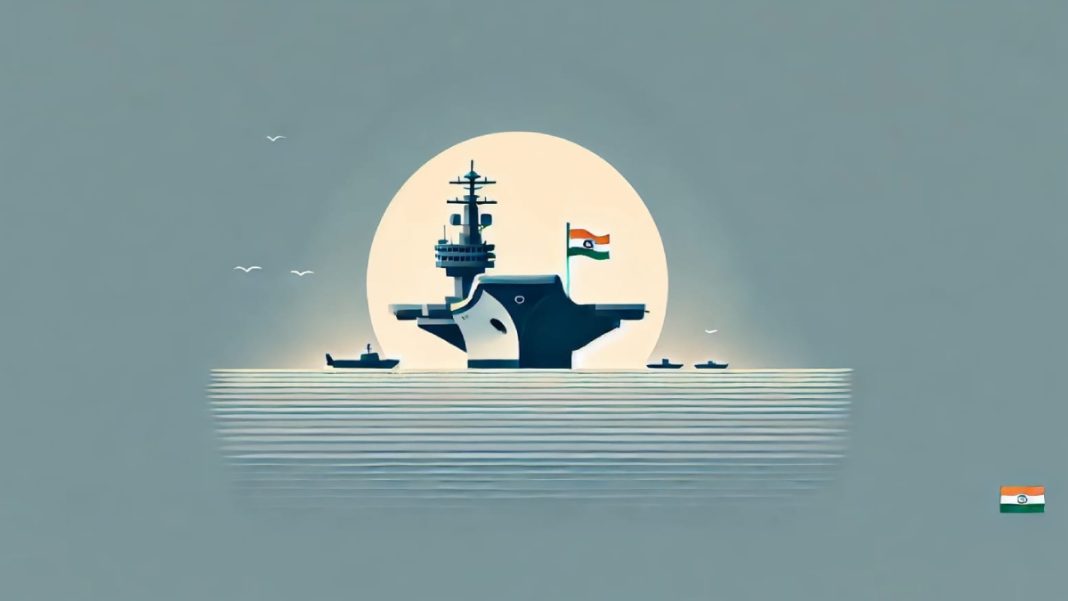On November 4, 2024, the Pakistan Navy publicly announced the successful test of its Ship-Launched Ballistic Missile (SLBM), named SMASH. The timing of this announcement—just one month ahead of India’s Navy Day on December 4, a date that commemorates India’s pivotal victory over Pakistan during the 1971 war—has sparked widespread interpretations that it is an attempt by Pakistan to demonstrate military strength amid an increasingly evident naval disparity between the two countries.
Pakistan touts the SMASH missile as a notable technological milestone, claiming it boasts a range exceeding 350 kilometers and the capability to engage both terrestrial and maritime targets. Yet, several defense analysts and naval experts express skepticism regarding the missile’s actual strategic significance. They reference Pakistan’s limited expertise and operational history with advanced maritime weaponry, suggesting that the hype surrounding SMASH may be more symbolic than substantive. Consequently, concerns remain that such developments do little to mitigate the Indian Navy’s overwhelming dominance in the region.
In stark contrast, India continues to advance its own missile technologies and naval capabilities. On November 16, 2024, the Defence Research and Development Organisation (DRDO) successfully executed a flight trial for India’s first long-range hypersonic missile, which is designed to carry diverse payloads beyond 1,500 kilometers. This significant leap in defense technology emphasizes India’s position, far outstripping Pakistan’s fledgling developments in the same field.
Furthermore, India has fortified its naval prowess by deploying Medium Range Surface-to-Air Missiles (MR-SAM), which provide a defensive shield with an operational range between 90 to 100 kilometers. These systems ensure comprehensive protection for India’s naval assets against potential threats from neighboring entities. In a bid to preserve its technological superiority, the Indian Navy is engaged in developing advanced interceptor systems capable of countering a spectrum of maritime threats, further evidencing its focus on state-of-the-art defense solutions.
The legacy of maritime superiority of the Indian Navy is deeply entrenched in historical contexts. The 1971 Indo-Pak War saw the execution of Operations Trident and Python, which successfully crippled Pakistan’s naval capabilities. Operation Trident dealt a hard blow by destroying crucial fuel reserves and sinking the destroyer PNS Khaibar, while Operation Python caused significant damage to Karachi’s port infrastructure, leaving Pakistan’s naval forces in disarray.
During the Kargil conflict of 1999, the Indian Navy demonstrated strategic acumen through Operation Talwar, deploying a resolute fleet in the Arabian Sea that deterred Pakistan from escalating the conflict to maritime engagement. This maneuver underscored India’s control over critical maritime routes and exemplified its strategic military planning.
In the wake of the Kargil conflict, the Indian Navy has embarked on an extensive modernization initiative, manifesting its commitment to enhance maritime capabilities. The induction of cutting-edge platforms, including the aircraft carrier INS Vikramaditya and the indigenous carrier INS Vikrant, alongside nuclear-powered submarines such as INS Arihant and INS Arighat, fortify India’s status as a formidable naval presence. The anticipated addition of INS Aridhaman promises to bolster India’s second-strike capabilities, an area where Pakistan remains considerably disadvantaged.
India’s integration of advanced missile systems, including the BrahMos supersonic cruise missile and substantial advancements in anti-submarine warfare technologies, positions it at the forefront of naval power in the region. These innovations not only enable India to address challenges posed by less experienced neighbors but also ensure a sustained strategic edge.
In light of Pakistan’s limited naval advancements, such as the SMASH missile, which may capture media attention, they are insufficient to shift the regional balance of power. India’s superior technological capabilities, grounded in a pronounced history of maritime dominance, undergird a robust defense posture that sustains national interests.
As the preeminent security provider in the Indian Ocean Region, the Indian Navy plays a crucial role in maintaining the stability of vital international waters. Fueled by indigenous innovation and strategic foresight, the Navy not only secures India’s maritime interests but also significantly contributes to regional peace and stability, affirming its role as a seasoned and capable maritime force.
Discover more from SSBCrack
Subscribe to get the latest posts sent to your email.








